

Evolution:
|
Biology as a science made its move from an Aristotelean stage to a Newtonian one with the development of the theory of evolution. Evolution is a change in the gene pool of a population over time. A gene is a hereditary unit (the microscopic `atom') that can be passed on unaltered for many generations. The gene pool (also called the phenotype of a species) is the set of all genes in a species or population (the macroscopic `object'). |
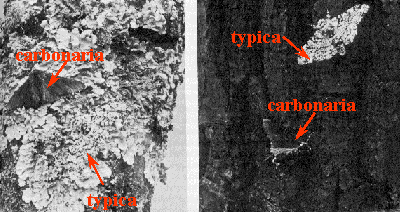
.. |
.. The English moth, Biston betularia, is a frequently cited example of observed evolution. In this moth there are two color morphs, light and dark (typica and carbonaria). H. Kettlewell found that dark moths constituted less than 2% of the population prior to 1848. Then, the frequency of the dark morph began to increase. By 1898, the 95% of the moths in Manchester and other highly industrialized areas were of the dark type, their frequency was less in rural areas. The moth population changed from mostly light colored moths to mostly dark colored moths. The moths' color was primarily determined by a single gene. So, the change in frequency of dark colored moths represented a change in the gene pool. This change was, by definition, evolution. .. The increase in relative abundance of the dark type was due to natural selection. The late eighteen hundreds was the time of England's industrial revolution. Soot from factories darkened the birch trees the moths landed on. Against a sooty background, birds could see the lighter colored moths better and ate more of them. As a result, more dark moths survived until reproductive age and left offspring. The greater number of offspring left by dark moths is what caused their increase in frequency. This is an example of natural selection. .. Populations evolve, not individuals. In order to understand evolution, it is necessary to view populations as a collection of individuals, each harboring a different set of traits. A single organism is never typical of an entire population unless there is no variation within that population. Individual organisms do not evolve, they retain the same genes throughout their life. When a population is evolving, the ratio of different genetic types is changing -- each individual organism within a population does not change. For example, in the previous example, the frequency of black moths increased; the moths did not turn from light to gray to dark in concert. .. The process of evolution can be summarized in three sentences: Genes mutate. Individuals are selected. Populations evolve. .. Thomas Malthus (1766-1834) was an English clergyman, whose writings on population growth had a strong influence on the theory of evolution by natural selection developed by Charles Darwin and Alfred Russel Wallace. |
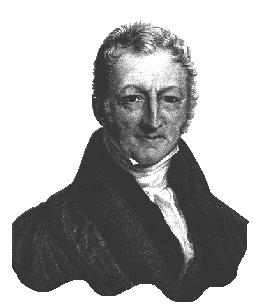
.. |
.. In An Essay on the Principle of Population (1797), Malthus observed that most organisms produce far more offspring than can possibly survive. .. Even when resources are plentiful, the size of a population tends to increase geometrically until the population outstrips its food supply. This led Malthus to believe that poverty, disease, and famine was a natural and inevitable phenomenon, leading to a "struggle for existence". |
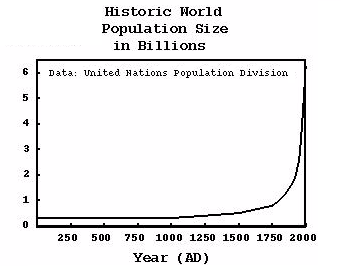
.. |
.. Evolution came of age as a science when Charles Darwin published "On the Origin of Species." Darwin's contributions include hypothesizing the pattern of common descent and proposing a mechanism for evolution -- natural selection. |
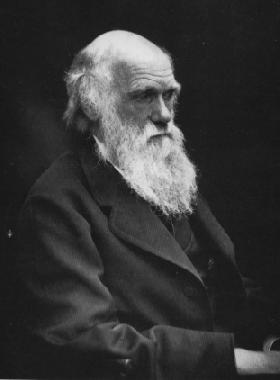
.. |
.. Darwin read Lyell's Principles of Geology and came to accept Lyell's view that long-term geological processes were responsible for shaping the earth's surface in a gradual manner. Indeed, Darwin successfully applied uniformatarianism to explain the development of coral reefs. .. In Darwin's theory of natural selection, new variants arise continually within populations. A small percentage of these variants cause their bearers to produce more offspring than others. These variants thrive and supplant their less productive competitors. The effect of numerous instances of selection would lead to a species being modified over time. |
|
Some types of organisms within a population
leave more offspring than others. Over time, the frequency of the more
prolific type will increase. The difference in reproductive capability is
called natural selection. Natural selection is the only mechanism of
adaptive evolution; it is defined as reproductive success of classes of
genetic variants in the gene pool.
.. Natural selection can be broken down into many components, of which survival is only one. Sexual attractiveness is a very important component of selection, so much so that biologists use the term sexual selection when they talk about this subset of natural selection. Sexual selection is natural selection operating on factors that contribute to an organism's mating success. |
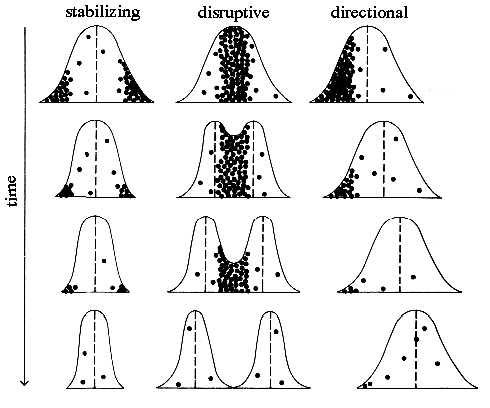
.. |
.. Three examples of selection are shown before stabilizing, disruptive and directional. The black dots are individuals that die out before passing on their genes. Stabilizing removes the extremes end of a trait distribution. An example might be birth weight of humans. Mortality rates at birth are highest at both ends of the normally distributed birth size range curve, thus tending to keep birth weight constant and near the mean. Directional selection would occur if individuals at one end of the normally distributed curve are favored. Disruptive selection would occur if selection simultaneously favored individuals at both ends of the curve, resulting in a tendency for the curve to become bimodal. An example is exhibited by butterflies, in which the females exist in several morphs some of which resemble two other species which are noxious. Intermediate butterflies do not gain the advantage of mimicry and thus are more likely to be preyed upon. |
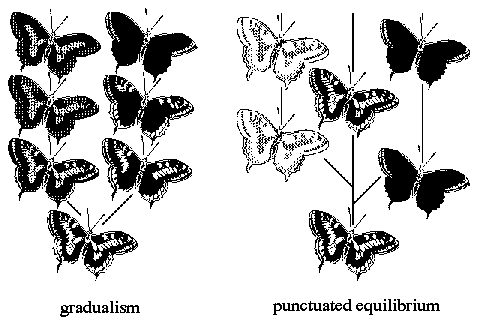
.. |
.. A new species diverges from its parent species as a small isolated population. According to the gradualist model, species descended from a common ancestor diverge more and more in morphology as they acquire unique adaptations. According to proponents of the punctuated equilibrium model, a new species changes most as it buds from the parents' lineage and then changes little for the rest of its existence. |
|
Most of human evolution involves physical
evolution, cultural evolution plays a fairly minor role until the Upper
Paleolithic, 40,000 years ago. Proto-humans, hominids, were constrained
and directed by the same evolutionary
pressures as the other organisms they shared the ecosystem with. Apes
and humans descended from a common hominids ancestor which lived about 20
million years ago during the Miocene epoch.
.. The Miocene climate was warmer than that of the present day and tropical forests were much more widespread. About 12 million years ago the world began to cool which would eventually lead to the onset of the Ice Age (1 million years ago). At this time, a tree-dwelling primate developed: .. Upright walking was a response to environmental changes in East Africa at the time, the rainforest was turning into steppes and grasslands due to global cooling. This reduced the apes' habitat and drove 2/3's of their species into extinction. Some primates developed arboreal lifestyles and became the gibbon lineage. Others, developed an upright stance, as a survival characteristic to see over tall grasses, and spent more time on the ground. About 3.5 million years ago, our first direct ancestor appeared, Australopithecus africanus, whose best fossil example is shown below. |

.. |
.. This primate eventually evolved into Homo Sapian. Note, that IQ was not an early trait of hominids. Brain capacity increased to process more complicated visual information and due to increased physical body size. A side benefit from increased brain size was 1) profit from experience (memory/learning) and 2) the ability to choose between alternatives (reasoning). Both of these new capabilities lead to the skills needed to manipulate the environment (tools). |
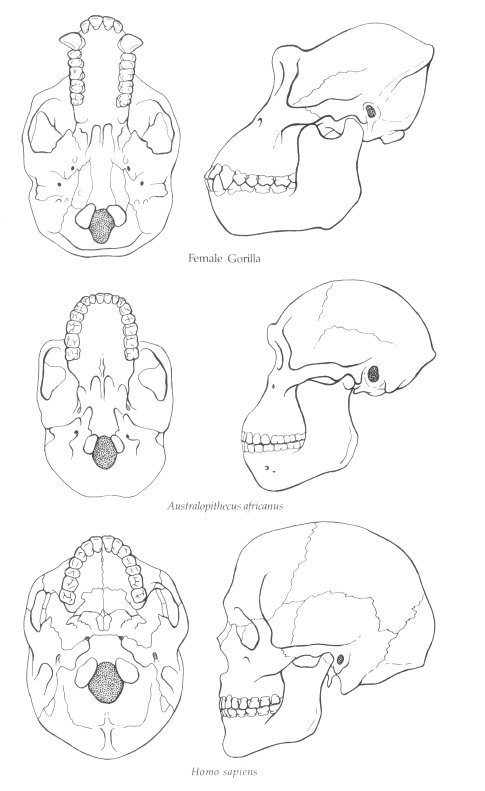
.. |
.. The idea that man evolved a large brain first was propagated for most of the 20th century by the famous Piltdown Hoax. When, in fact, most of the physical attributes of human form (upright walking, jaw and teeth structure, pelvic and leg formation) came before brain size evolved. .. Our current idea of the human family tree is shown below, whose origins lie on the continent of Africa, then spread around the globe. We also know that every living human is the direct descendent of a single Homo Sapian woman who lived in Africa 150,000 years ago (i.e. Eve) based on the matching of DNA from cellular mitochondria in people around the world. Notice that our last common ancestor with apes is Australopithecus ramidus, about 5 million years ago. Also note that many species of Australopithecus and Homo are now extinct. |
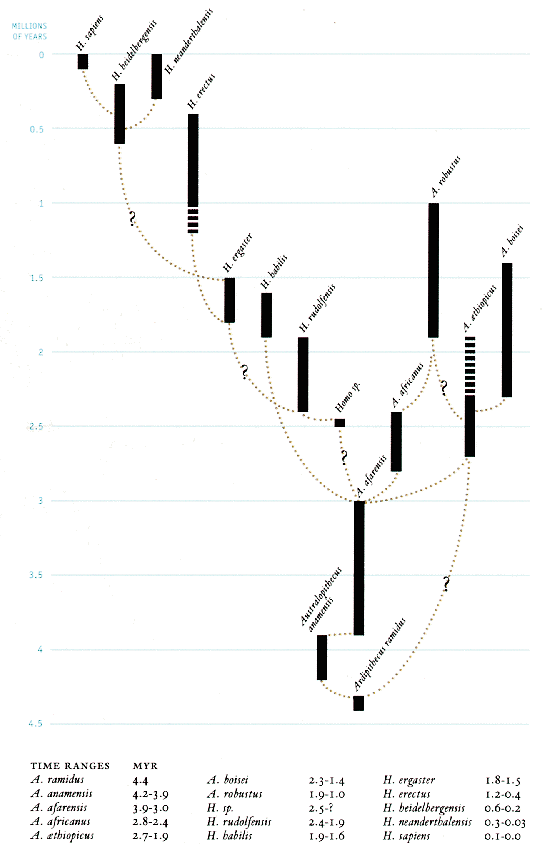
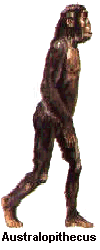
.. |
.. At the point where early Homo Sapian developed language a new form of evolution began. Normal evolution has inherited traits being transmitted by genes. So a bird knows how to build a nest due to inherited learning. However, language now allows the passing on of information by behavioral means, the process of learning and teaching. Although we humans are genetically equipped with basic biological imperatives, our sophisticated cultural behavior must be learned and language is the symbolic mode of communication that is associated with this learning. .. The basic premise here is that culture has some advantage for the survival of our ancestors, therefore natural selection favors genes responsible for such behavior. DNA information only passes from individual to individual, but cultural evolution is active, incorporates a lifetime of teaching and can be passed from one individual to many. Cultural evolution, with its global nature, becomes the distinguishing characteristic of humans. |